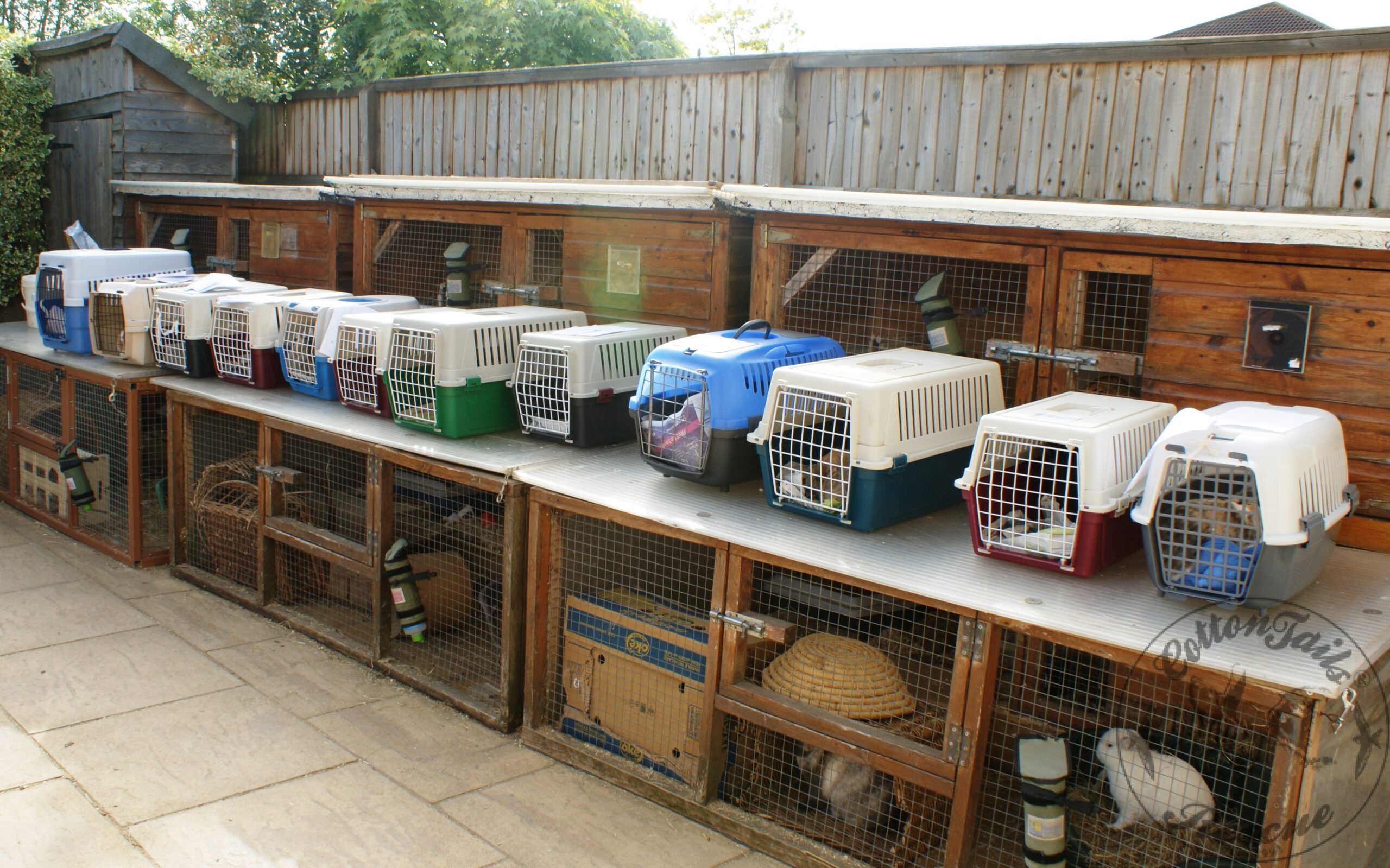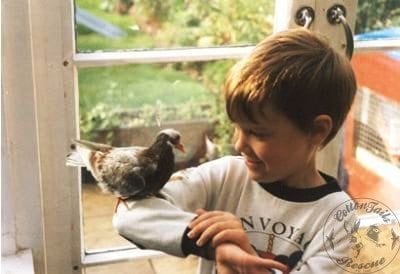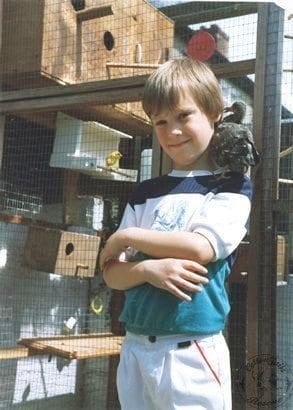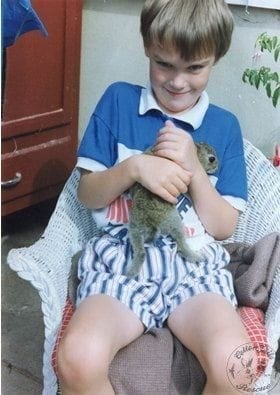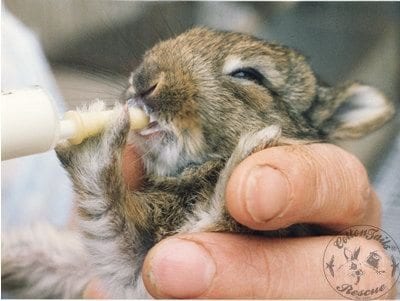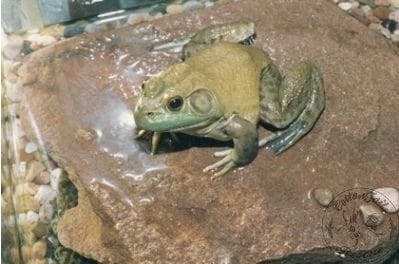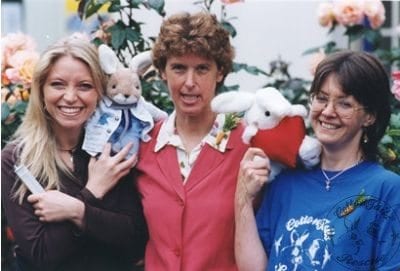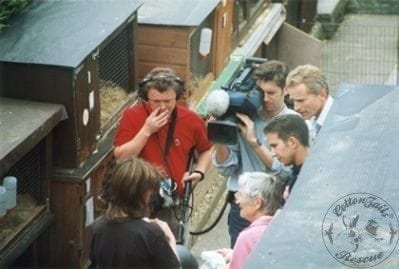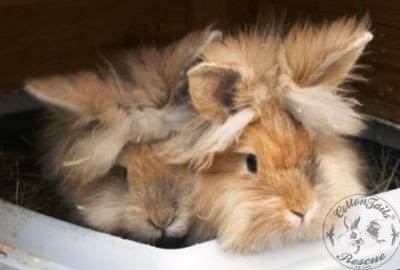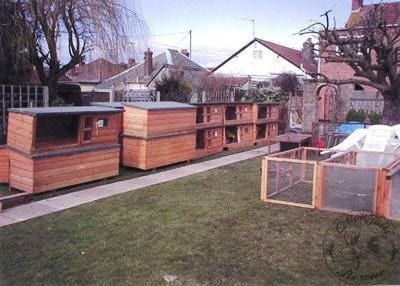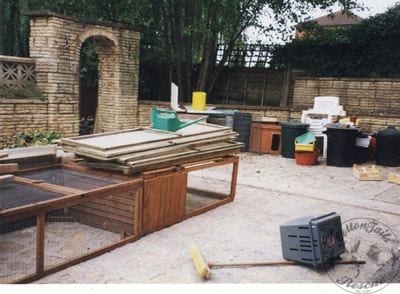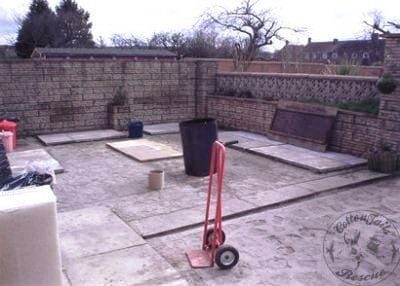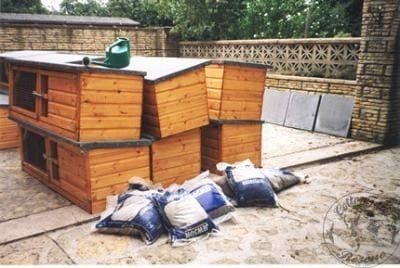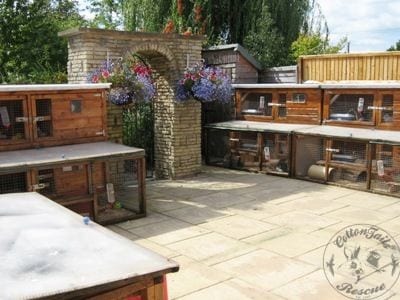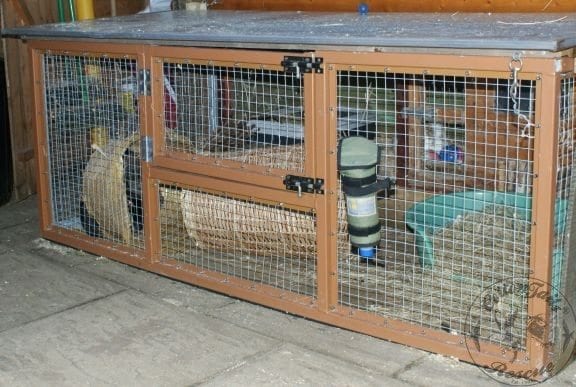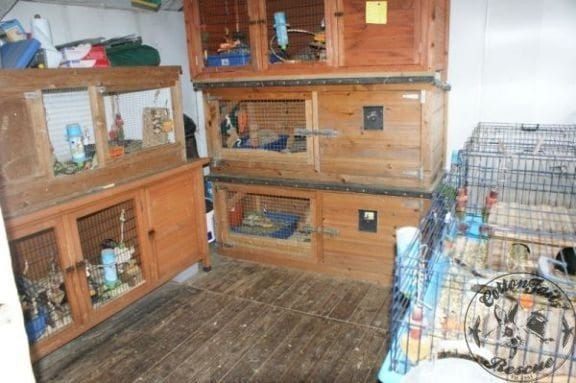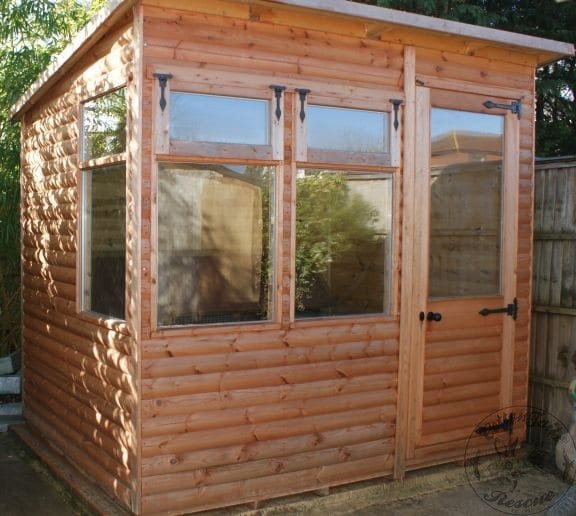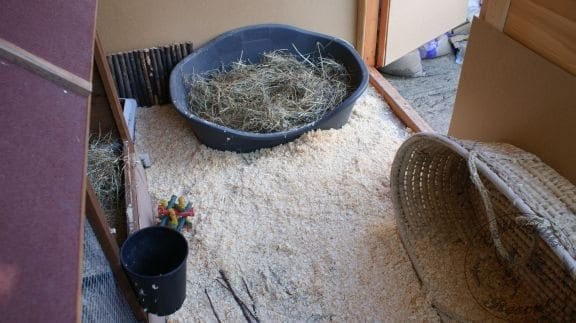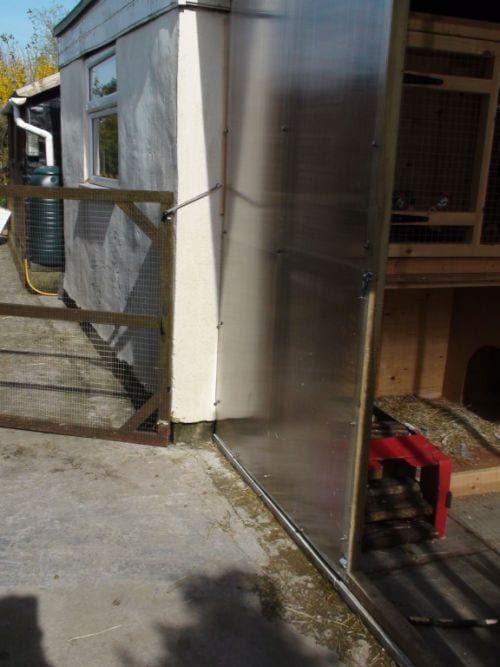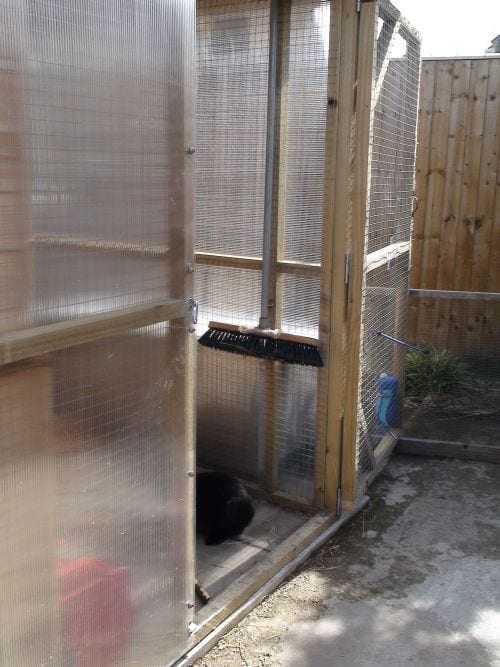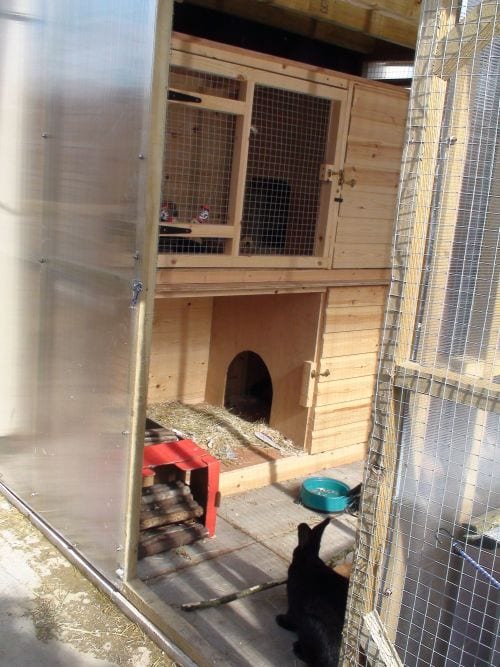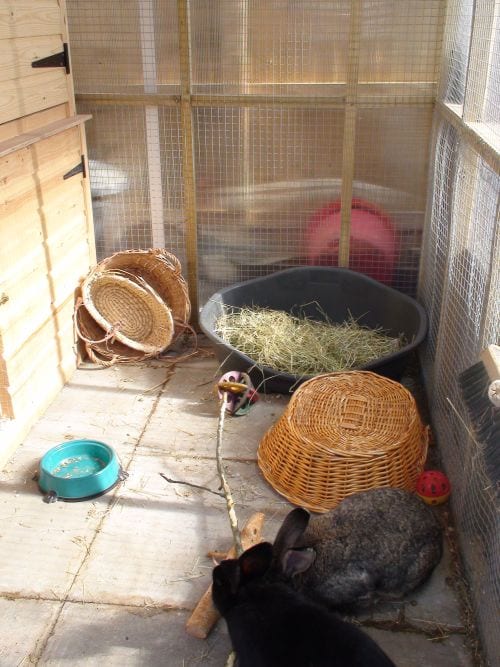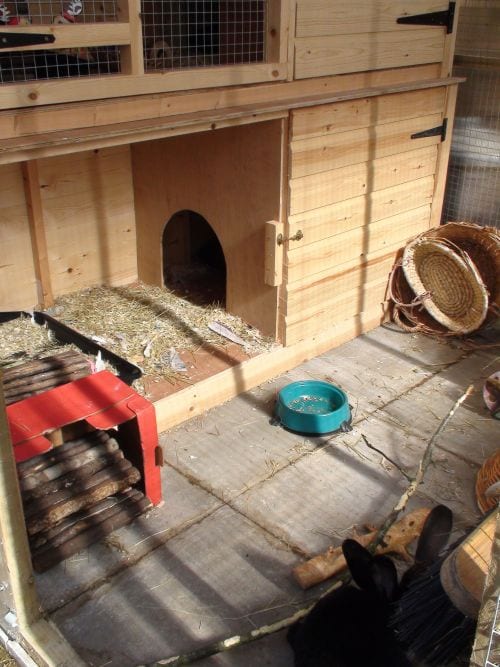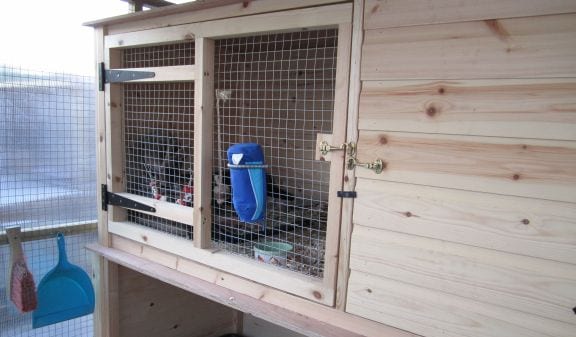This is a brief account of how the charity started, including how we managed to relocate twice and still keep the charity running and some hints on moving an animal rescue!
Site No. 1 – Fishponds in Bristol
CottonTails started in 1993 and was initially located at Fishponds in Bristol. My rescue work as an adult did not begin with rabbits but with birds, and some of the individuals I helped along the way are shown below, aided by my eldest son, who was about seven years old at the time. My previous experience with rabbit rescue started as a young teenager when I took on rabbits from neighbours and friends who did not want them any more and then brought home a large number of rabbits from a local laboratory that was closing down. All were successfully rehomed, although I admit to keeping some longer than strictly necessary!
It was when a vet brought in an injured wild baby rabbit that it all began. This is a photo of “Little Bun”, sadly, the only photo of her that I have, it being the pre-digital era. She was a lively little bunny, as you can see! As she had a brain injury, she was not able to be released but was happy in a very large pen where she could roam as she wished in safety.
Much of my time was taken up in the early years with hand-rearing various orphans, from an assortment of crows, jackdaws, blackbirds, robins and other birds, to squirrels, hedgehogs and wild baby rabbits that dogs or the occasional builder had accidentally dug up.
Not only did I work with rabbits and orphaned birds, but the kitchen was also home to a large American Bullfrog who used to wake up the household at 3 am with his loud croaking, three axolotyls (the larval form of the Mexican Salamander that look like very big newts with feathery gills) who grew to almost 8 inches long and demanded a complicated filtration system, various species of stick insects including some that could fly around the room, and a large tank of ever-increasing Giant African Land Snails! The conservatory was carefully filled with an assortment of chinchillas and guinea pigs, and outside, there were aviaries for the wild birds waiting for release, pigeons of various types, more chinchillas and, of course, the rabbit hutches.
During our time in Fishponds, I was lucky enough to have a friend (Sue Hunter) who was very good at coming up with ideas to engage with the public about rabbit welfare issues, and one of the ideas was “The Carrot Awards”. A competition was organised for people to nominate their rabbit for various categories, and with the local papers all supporting the idea we had a lot of entries! Trude Mostue from the BBC Vet programme kindly gave up her time to help us give out the awards, and the ceremony was held at Bristol Zoo. What a day that was! Trude is on the left of the photo, Sue is in the middle, and I am on the right.
Site No. 2 – Keynsham
In 1998, we moved to Keynsham. I decided I needed to concentrate more on the rabbit rescue side of my work as this was what was needed most, so I spent a few busy weeks before the move finding good homes for all the animals (except the family dog) and dismantling the aviaries. This included over 30 chinchillas, 40 pigeons, and various other birds, not to mention the current rabbit and guinea pig inhabitants! The move was as stressful and challenging as most relocations, made slightly easier in some respects by deciding to only take some of the hutches with us and start again with new ones once we had settled in. As you can see, we attracted a fair amount of press interest at the time.
Although in Fishponds, I was lucky enough to have over ten volunteers a week helping with the cleaning out (usually at least two people every day apart from Sundays), the majority of them were not able to follow us to Keynsham. Hence, we had to start recruiting volunteers all over again. However, after a while, we had some lovely people come forward to help on Saturday mornings and mid-weeks, which helped immensely, especially as I had two additions to the family by then!
Keynsham was smaller than the premises we had enjoyed at Fishponds, but the set-up was far better, with large 6′ hutches and runs attached to the front. By this point, we had started to neuter all the rabbits before adoption, which meant we could match up all of them before they went to their new homes. This was mainly due to changes in anaesthetics, making the operation much less risky, especially for females. Around this time, research in rabbits started to take off in the UK, with more and more people realising that the social life of a rabbit was far more complex and demanding than had at first been realised. This ongoing process has resulted in the life of the average pet rabbit being much improved, although a lot of work remains to be done.
Site No. 3 – Westbury in Wiltshire
In 2003, we moved again, a bit further away, to Westbury in Wiltshire. Although we had a lot of work to prepare the ground for the rabbits’ accommodation, it was a good move with the best setup yet, including a large guinea pig shed and proper storage for hay and other bedding.
The rabbit section (before changing over to the Direct Rehoming Service)
Our specially made metal runs …
The guinea pig shed before our switch to the Direct Rehoming Service
Specially built accommodation for giant rabbits or large litters (before the run area was attached):
Below is a short film of our giant’s accommodation before we switched to using the Direct Rehoming Service. The new unit measures 7′ by 7′, opening up to an outside run area. The accommodation inside the unit comprises two large 7′ by 2.5′ by 3′ hutches placed on top of each other. The top hutch will also serve as an isolation unit should the need arise (in which case the lower level and run occupants would need to be moved). Photos of the unit are also below.
Additional giant rabbit accommodation, including isolation unit:
Tips to bear in mind when moving
There is no doubt in my mind that relocating an animal rescue is not for the faint-hearted. There is a lot to consider, far more than you might expect, even to ensure that you will not run into any planning or neighbour problems at the new site. Firstly, there are the obvious concerns about moving animals to minimise stress. Secondly, there is moving the accommodation or whether to start again with new equipment, in which case budgeting for this significant expense needs to be a top priority. Thirdly, helpers may not follow you, so you could be on your own for a while, just at the time when you need help the most. Fourthly, you must start over again to build up a reputation, which can take at least a couple of years. In addition, all the paperwork and letterheadings have to change, as well as telephone numbers. I arranged for a message to be put on the old telephone number to inform people of our relocation and how they could contact us, and kept this going for about a year, as well as getting local newspapers to carry the story so that as many people as possible would know how to contact us. This was before we had a website, of course! All this is on top of the usual worries about house sales, change of schools, and the thousand and one things you have to sort out at the time.
I do not advise anyone to do it unless there is no choice. If it is unavoidable and using the benefit of hindsight, I would say that it is vital to stop the rescue work at least 2 or 3 months before the actual move to ensure that all the animals are re-homed and not to start up again until 2 or 3 months after you have moved in and have got everything organised and in place. There is no advantage in rushing to get things up and running again, as I found out to my cost. We ended up having to resurface the whole of the patio area. Because I was in such a hurry to start taking in rabbits again, we went to a lot of trouble putting a temporary layer of heavy paving slabs down, only to have to move the whole lot (as well as all the hutches) again when the builders arrived! If only I could have waited … Yes, we are all very knowledgeable after the event. We were fortunate to have some wonderful people who helped us with the move and the horrible job of moving the slabs (twice) and all the work it entailed. Without them, CottonTails would have faltered badly, perhaps permanently. Be sure that if you are moving, you have lots and lots of backup!

